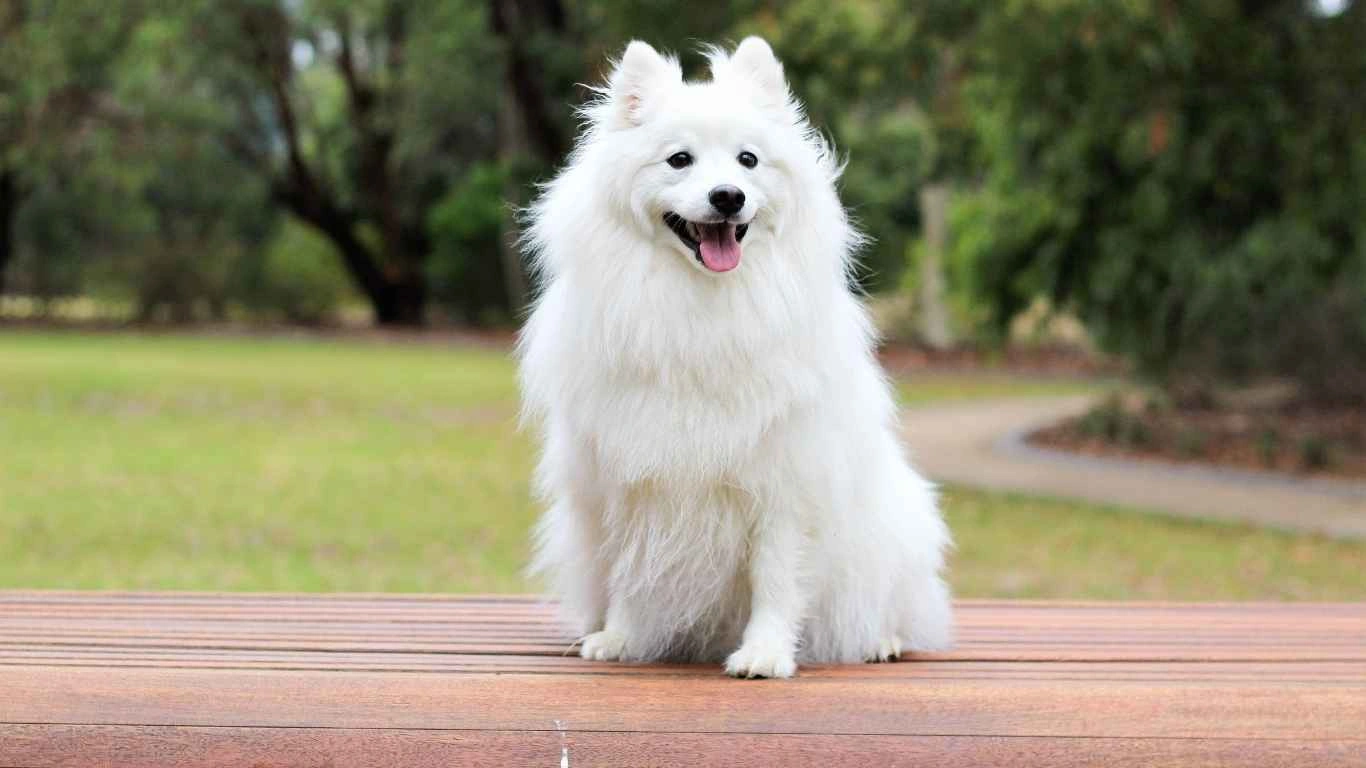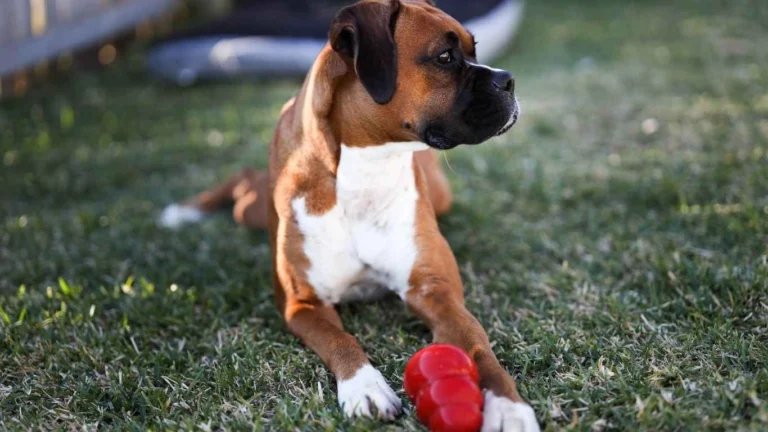Naturally Detox Your Dog’s Body Through Diet for a Healthier, Happier Pup
If you’ve ever wondered how to naturally detox a dog’s body through diet, you’re not alone—I get that question all the time from pet parents who just want to do right by their furry best friends. As someone who’s spent years up close and personal with dogs in shelters and clinics, I’ve seen firsthand the toll that processed food, chemical exposure, and environmental toxins can take on their bodies. Whether it’s dull coats, recurring ear infections, or just low energy, I always say: sometimes, it’s not about what meds you can add in—it’s about what toxins you can take out. And that often starts with what’s going in their bowl.
Why Detoxing Matters for Dogs

Let’s get one thing clear: your dog’s body already *wants* to detox. Their liver, kidneys, and even skin are working daily to flush out the bad stuff. But just like us, modern life throws them more than their system can handle. Between lawn pesticides, low-quality kibble, and chemical flea treatments, the overload is real. And unlike humans, dogs can’t exactly speak up when something’s off—they just get sluggish or itchy, and we’re left guessing.
I remember working with a sweet old bulldog named Max—he was always scratching, had this persistent gunky ear issue, and couldn’t keep up on walks. His owner was frustrated, thinking it was just “old age stuff.” But after some gentle dietary detox changes? Max started moving like he’d knocked five years off. His ears cleared up, and that constant scratching? Gone. It’s moments like that that made me believe 100% in food as medicine for our pups.
What Toxins Are We Talking About, Exactly?

So, what’s gunking up your dog’s system? Here are some common culprits:
- Commercial dog food ingredients: Fillers like corn, soy, meat by-products, artificial colors, and preservatives.
- Tap water: Chlorine, heavy metals, and even trace pharmaceuticals can sneak into your dog’s water bowl.
- Flea and tick meds: While sometimes necessary, these are packed with chemicals that burden the liver.
- Household cleaners and sprays: Dogs walk on floors and lick their paws—if you’re cleaning with bleach, they’re basically ingesting it.
- Overuse of antibiotics or meds: These can mess with gut health and weaken immune response over time.
It’s kind of wild when you think about it. We watch what we eat, drink filtered water, and avoid toxins when we can—why wouldn’t we do the same for our pups?
How to Naturally Detox a Dog’s Body Through Diet

Okay, now let’s get into the good stuff—how to naturally detox a dog’s body through diet. There’s no one-size-fits-all solution here, but there are some tried-and-true basics I’ve used with my own dogs and recommended to countless pet owners.
1. Start with Clean Proteins
Protein is essential, but not all protein is created equal. Ditch the mystery meat in kibble and opt for whole-food sources like:
- Organic chicken or turkey
- Grass-fed beef
- Wild-caught salmon (bonus: it’s rich in omega-3s for skin and joints!)
- Cooked eggs—great for a shiny coat
If raw feeding is your jam, just make sure you’re doing it safely and getting guidance on balancing nutrients. I’ve had great success with gently cooked meals too, especially for dogs transitioning off kibble.
2. Load Up on Detox-Supporting Veggies
Yes, dogs can eat veggies! In fact, some of the best detox foods for dogs come straight from your fridge drawer:
- Broccoli: Supports liver function
- Beets: Help cleanse the blood
- Carrots: High in antioxidants and beta-carotene
- Spinach: Full of fiber and chlorophyll
- Parsley: Natural breath freshener and mild diuretic
I always recommend steaming or pureeing veggies for better digestion. Dogs don’t chew their food like we do, so give their systems a hand by making plant foods easy to absorb.
3. Add Healing Herbs and Supplements
Nature has given us some pretty powerful tools for detox. I’m not big on pushing tons of supplements, but these are ones I’ve seen help time and again:
- Milk Thistle: Supports liver regeneration and function
- Turmeric: Anti-inflammatory and liver-protective
- Chlorella: A detoxifying algae that binds to heavy metals
- Probiotics: A must-have to rebuild gut health and immunity
Of course, always double-check with your vet (preferably a holistic one) before adding new herbs. Every dog’s different, and what works wonders for one might not be a good fit for another.
4. Hydration is Key
You’d be surprised how many dogs are borderline dehydrated. And when detoxing, water’s your dog’s best friend—it helps flush toxins through urine and supports kidney function. If your dog’s not a big drinker, try bone broth! It’s super hydrating, loaded with minerals, and dogs go crazy for it.
In shelters, I used to mix in broth just to get nervous rescues eating and drinking again. Not only does it boost hydration, it’s soothing on the gut and can help settle digestion while their body adjusts to a cleaner diet.
Building a Daily Detox Routine That Actually Works

Alright, now that we’ve got the basics of how to naturally detox a dog’s body through diet laid out, let’s talk about how to make it stick. Detox isn’t just a one-and-done deal. It’s something we should gently support every day through intentional food choices and simple daily habits. Trust me—once you see the difference, there’s no going back. I’ve had more than a few clients turn into full-on raw-feeding, veggie-chopping, broth-making dog parents after seeing their pup’s eyes get brighter, their coat glossier, and their energy bounce back.
1. Rotate Ingredients Regularly
Dogs thrive on variety. Feeding the same protein every day can lead to intolerances and nutritional gaps. I used to be guilty of this too—my lab mix, Sadie, loved chicken so I just kept giving it to her until she started itching constantly. A quick switch-up in proteins and a sprinkle of omega-rich sardines, and boom—itching gone. Now I rotate her proteins weekly: turkey one week, beef the next, maybe a little duck or lamb here and there. Keeps things balanced and exciting (for both of us).
2. Ditch the Kibble (or at Least Upgrade It)
I know this one’s a touchy subject. Not everyone has time to cook for their dogs every day—and that’s okay! But if you’re feeding kibble, make sure it’s the cleanest, most limited-ingredient option you can find. No corn, no soy, no artificial flavors. And for real, read the ingredients like you would your own food. If the first three things aren’t recognizable meat sources, put it back on the shelf.
Some great brands are doing air-dried or freeze-dried raw options now—minimal processing, no garbage fillers, and easy to store. It’s a great way to bridge the gap if you’re not quite ready to go full homemade.
Detox-Friendly Treats and Snacks

Let’s be honest—treats are where a lot of junk sneaks in. I’ve seen the “healthy” ones on shelves loaded with sugar, dyes, and preservatives that don’t belong anywhere near a dog’s mouth. When I worked at the shelter, I used to bring in homemade treats just so we weren’t giving stressed-out pups another layer of toxins.
Simple Detox-Supporting Treat Ideas:
- Frozen blueberries: Full of antioxidants and dogs love the crunch
- Dehydrated sweet potato slices: Easy on the gut, fiber-rich
- Bone broth cubes: Freeze in ice trays for a cooling treat
- Apple slices (no seeds): Great for a sweet crunch
- Homemade coconut-oil “pup pops”: Mix coconut oil with a dash of turmeric and freeze for an anti-inflammatory boost
Keep it simple. If it’s something you wouldn’t eat, maybe your pup shouldn’t either. That mindset shift alone can be a game-changer.
Supporting Detox Beyond the Bowl

Food’s a major part of the puzzle, but detoxing isn’t just about diet. Think lifestyle. Think environment. It all ties in. I always remind dog parents—your home is your pup’s entire world. What they walk on, breathe in, chew, and snuggle up to matters.
1. Air and Water Quality
If your dog drinks from a plastic bowl filled with tap water, it might be time for an upgrade. I recommend filtered water (just like you’d drink), and stainless steel or ceramic bowls to avoid chemical leaching. Trust me, the difference adds up over time.
Also, open those windows! Indoor air can be loaded with VOCs from cleaners, sprays, and furniture. Let your home breathe—and your dog will too.
2. Gentle Grooming
The skin is a major detox organ, and it needs support. Weekly brushing helps remove dead skin cells and stimulates lymph flow. Bathing too often can strip oils, but when you do, use a natural, fragrance-free shampoo. I once had a client unknowingly using a lavender-scented shampoo with parabens—her pup had chronic hot spots. We switched to a gentle oatmeal blend, and within two weeks, the inflammation started to fade. Little changes matter.
3. Movement and Mental Stimulation
Exercise gets the lymphatic system moving, which is crucial for detox. Let your dog run, sniff, explore—especially in nature if you can. Forest trails, beaches, even quiet parks offer fresh air and mental stimulation that help reset their system.
Don’t forget mental games too! Lick mats, puzzle feeders, hide-and-seek with treats—all of these reduce stress and keep their minds sharp. Stress hormones can throw off the whole detox process, so a happy, relaxed pup is a healthier pup.
4. Cut Back on the Chemical Load
This one’s big. Look at everything your dog is exposed to regularly:
- Flea and tick meds
- Heartworm preventatives
- Vaccines
- Cleaning sprays
- Yard chemicals
Now, I’m not saying to ditch everything—but ask your vet about spreading things out, using natural flea repellents like neem oil, or skipping non-essential boosters. I once worked with a holistic vet who helped a rescue pup detox after years of over-vaccination and constant chemical spot-ons. With a gentler protocol, his liver values returned to normal, and his coat grew back thick and healthy. It was wild to see the transformation.
Detoxing naturally through diet and daily care isn’t about perfection. It’s about being intentional. Small steps, over time, add up to huge changes. I’ve seen it again and again, and if you’re ready to start somewhere, start with the food bowl. That’s where the real magic begins.
Long-Term Detox: Creating a Sustainable Lifestyle for Your Dog

So now that we’ve covered the how-tos and daily detox rituals, you might be wondering—what’s next? How do we make this stick for the long haul without feeling like we need a nutrition degree or a second job just to feed our dog? The good news is, how to naturally detox a dog’s body through diet isn’t about perfection. It’s about building sustainable habits that feel doable and real. Think small shifts that snowball into big wins over time. Honestly, that’s been the secret to every transformation I’ve seen, from rescue pups recovering from rough pasts to senior dogs finding their second wind.
I remember one boxer mix named Luna—came into the clinic with chronic diarrhea, itchy skin, and a coat that looked like a worn-out welcome mat. Her foster mom was overwhelmed, but after just 30 days of basic diet changes and some daily detox support? Her stool normalized, her itchiness calmed down, and her fur came in soft and shiny. The difference was night and day—and it started with what was in her bowl and what wasn’t.
1. Make Prep Simple and Consistent
Meal prep doesn’t have to be complicated. I always tell pet parents: pick one day a week to prep just like you might for yourself. Bake or boil some proteins, chop and lightly steam veggies, portion it all out, and freeze extras. I use silicone molds for single-serving freezer portions—it saves me so much time during the week. Plus, your dog will get used to the rhythm, and let’s be honest—they love the routine.
Here’s a go-to mix I use for my own dogs:
- Ground turkey (lightly cooked)
- Shredded zucchini and carrots (steamed)
- Cooked quinoa (easy to digest and protein-rich)
- Drizzle of fish oil for those omega-3s
- Sprinkle of dried parsley or turmeric
It’s easy, balanced, and makes a huge difference in detox support and digestion.
2. Pay Attention to Your Dog’s Signals
Your dog will always tell you how they’re doing—you just have to know how to listen. Keep an eye on their poop (yes, really), their skin, coat, energy, and behavior. Sudden bad breath, unusual shedding, licking paws excessively, or mood changes can all be subtle signs of toxin buildup or nutritional imbalances.
One of my clients noticed her golden retriever started chewing his feet again after switching to a “grain-free” kibble with lots of peas. Turns out, it was spiking his insulin levels and stressing his system. As soon as they swapped it for a more balanced fresh food diet, the paw chewing stopped. Bottom line: your dog is talking—just not with words.
Vet Support and When to Seek Guidance

It’s important to mention that while food is incredibly powerful, it’s not a cure-all. I always, always recommend working with a vet you trust—ideally someone with a holistic or integrative approach. They’ll help guide detox protocols without overloading your pup, especially if they have underlying conditions or are on medications.
Some vets can run liver function tests, food sensitivity panels, and check for heavy metal exposure. This can give you a baseline and help you tailor your dog’s diet and supplements more effectively. Don’t be afraid to ask questions or advocate for more natural options when it comes to meds and boosters, too. A good vet will work with you, not against you.
Red Flags to Watch For:
- Persistent digestive issues even with dietary changes
- Sudden lethargy or loss of appetite
- Extreme weight loss or gain
- Unusual behavior changes or neurological symptoms
If any of those pop up, it’s worth getting your pup checked out ASAP. Detox should help your dog thrive—not make them feel worse.
Keeping It Real: My Go-To Tips for Staying on Track
Let’s be honest, life gets busy. There will be days when the idea of steaming kale for your dog feels laughable. And that’s okay. This isn’t about being the perfect dog parent—it’s about being intentional and informed. Here’s what I always go back to:
- Keep it 80/20: Aim for clean, whole foods most of the time. If you hit a fast-food patch, don’t stress it—just get back on track.
- Stay stocked: I keep a stash of bone broth cubes, sardines, and dehydrated veggie blends in my pantry. Instant nutrient boost without the prep.
- Batch cook: Sundays are “dog meal prep day” in my house. Make it a routine, and it becomes second nature.
- Join a community: There are amazing Facebook groups and Instagram pages full of raw feeders, holistic dog lovers, and fellow detox nerds sharing tips, wins, and encouragement. You’re not doing this alone.
And above all, trust your gut. You know your dog better than anyone else. If something feels off, speak up. If something feels right, lean into it. You’ve got this.
References
Disclaimer
The content provided in this article is based on personal experience and should not replace veterinary advice. Always consult with a qualified veterinarian before making significant changes to your dog’s diet or health regimen. What works for one dog may not be suitable for another, especially those with existing health conditions or on medication.






